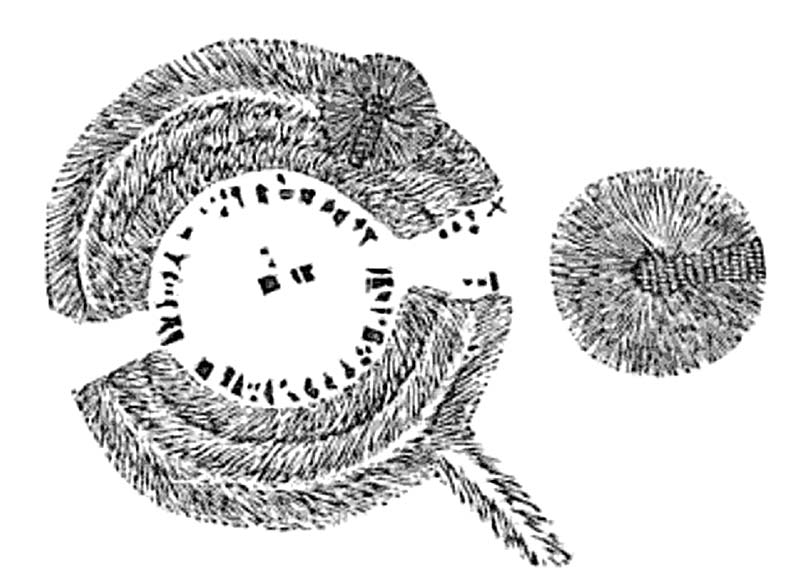
in Glover, Stephen, The History and Gazetteer of the County of Derby Vol.1 , p237, 1831, Henry Mozelly & Son, Derby.

This drawing was made by
Samuel Mitchel when he dug into the superimposed round barrow on 1st of June
1824, there is no mention
of any finds, which is not surprising as the barrow had been dug
previously at least twice. There is no explanation for the large round barrow
shown just outside the SE entrance to the henge, Bateman in Vestiges
mentions opening a barrow 50yds south of Arbor Low in 1844, but describes this as very
small (around 10m diameter), certainly not as large as the one shown here. It is interesting to note
the depiction of rows of stones lining each side of the SE entrance
to the henge, this adds weight to the idea that the entrances may have
originally had upright portal stones.
Vestiges of the Antiquities of Derbyshire, p109, 1848, John Russel Smith, London.
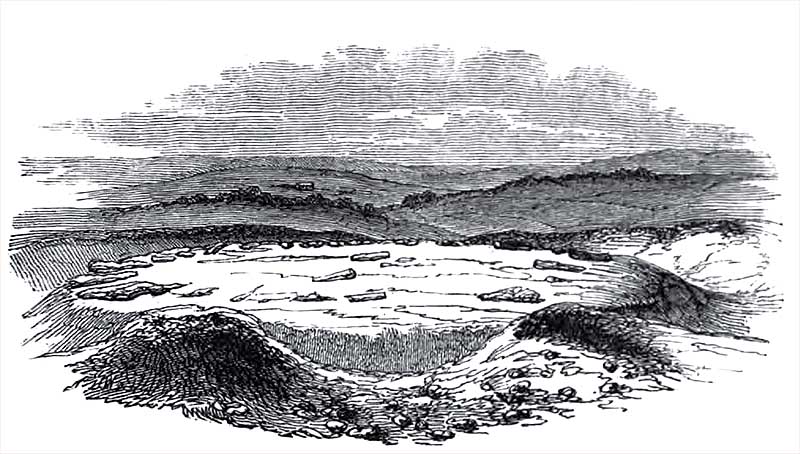 |
The bumps in the foreground
of this depiction of the henge interior suggest that the viewpoint is from the
top of the superimposed
round barrow at the SE. The drawing is not very accurate however, as there is no
sign of an entrance causeway crossing the ditch,
as well over half of the ditch circumference is shown, one would surely have
been visible.
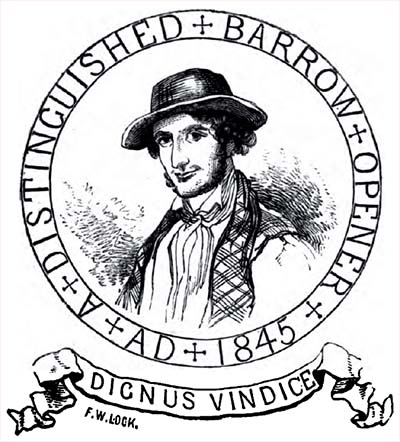
The man himself, this portrait faces the title page of the book.
The Latin motto translates as "worthy protector (or defender)", not perhaps the
way Bateman and his
fellow barrow-diggers are regarded today.
Ten Years' Diggings in Celtic and Saxon Grave Hills, p.284, 1861, J.R.Smith, London.
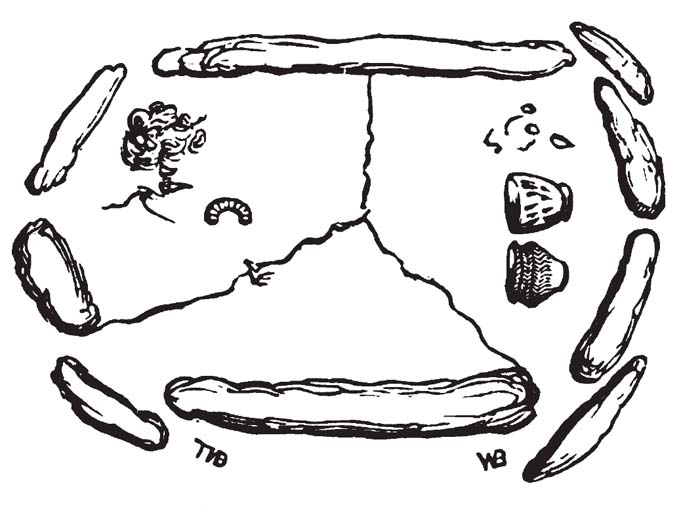
Bateman's sketch of the
cist he found in to the round barrow superimposed on the SE of the henge bank at
Arbor Low. Bateman was very proud of this find as the barrow had been dug by
others at least three times previous
to Bateman's attempt, he even described the find as "so long a desideratum".
The inverted "Y" above shows the seams of the three closely fitted limestone
slabs that formed the floor of the cist,
the walls were formed with ten edge-set stones of which nine are shown here. The
vessels were found at the western
end of the cist which was about 18 inches deep and was capped by a limestone
slab 5 feet long and 3 feet wide.
The strange "c" shaped object mid left is part of the decorated rim of a third
vessel.
Rude Stone Monuments in All Countries; Their Age and Uses , 1872, John Murray, London.
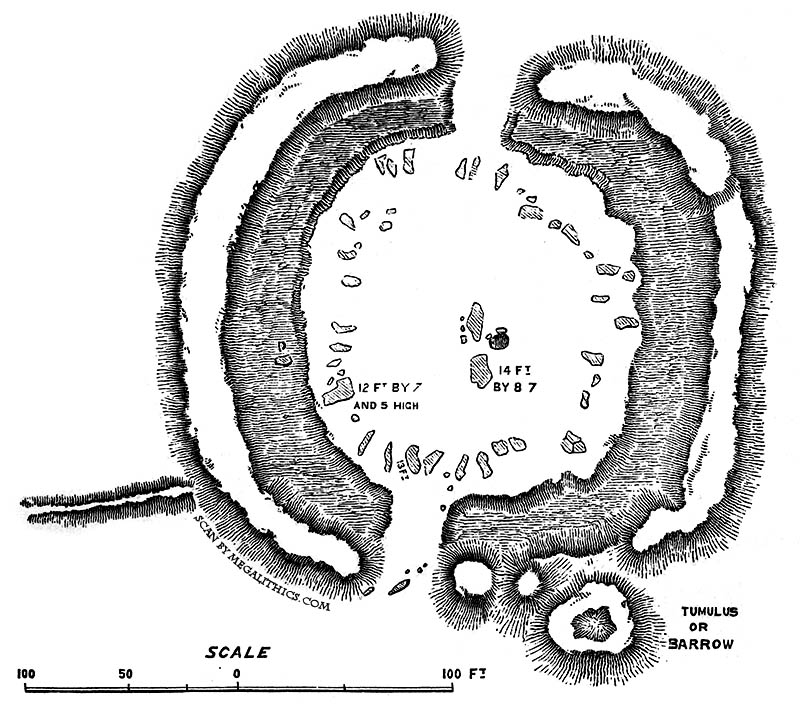 |
This plan is derived from a
drawing by Sir Gardner Wilkinson and it compares well with modern surveys of the
monument.
The stones fallen into the ditch at the SW are shown, as are several in the
mouth of the SE entranceway, the "avenue"
feature on the left is also accurately depicted.
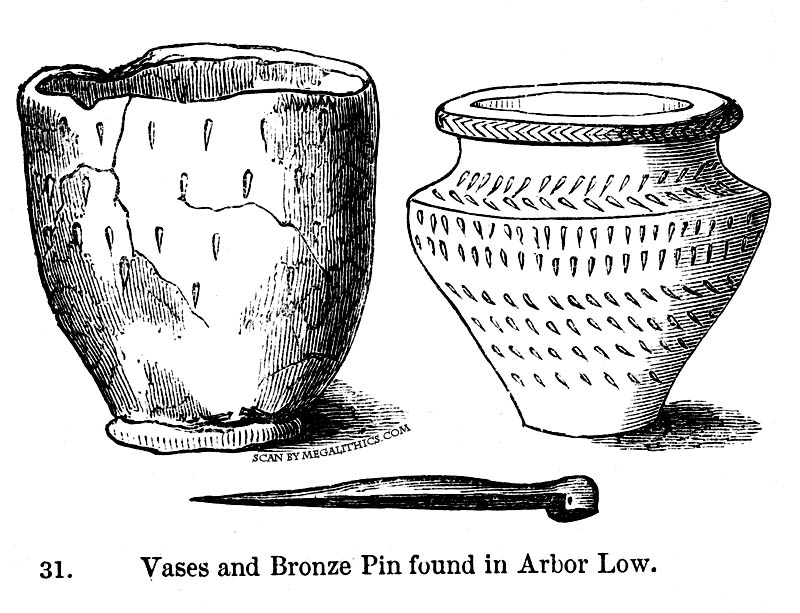
These are the finds from
Bateman's dig in to the round barrow superimposed on the SE of the henge bank,
the pots can also be
seen in Bateman's own drawing above. The drawing of the vessel on the left is
quite accurate, but in reality, the rightmost vessel is much more
squat and the rim has a wider diameter than the shoulder. The pin which
Fergusson describes as bronze, is actually bone, Bateman
describes it as being "made form the leg-bone of a small deer".